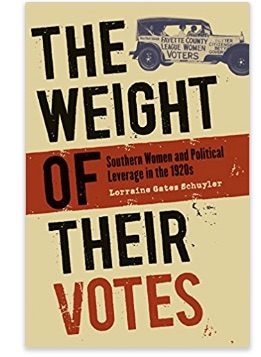In this installment of New South and Progressive Virginia, we conclude our Phase I reviews of 300+ titles surveyed. These were taken from the bibliographies in three Virginia history surveys covering its 400+ year history. Two were published in 2007 and are currently used in Virginia university courses, and one bibliography is from another’s draft manuscript to be released by the University of Virginia Press next year.
Phase II of The Virginia Historian Blog will review titles currently in print taken from the pages of the Virginia Magazine of History and Biography since 2006, along with insights from reviews in the William and Mary Quarterly, Journal of the Civil War Era, Journal of Southern History and Journal of American History.
In this blog we will look at the remarkable Gilded Age growth of Big Lick, Virginia in “Roanoke, Virginia, 1882-1912. Women in Virginia and the South not only voted following the 19th Amendment, they also engaged in hardball party politics as described in “The Weight of Their Votes”. The Progressive impulse extended to film regulation as we see in “Race, Gender, and Film Censorship in Virginia, 1922-1965”.
Roanoke Virginia

Rand Dotson wrote Roanoke, Virginia, 1882–1912: Magic City of the New South in 2007. It is available at the University of Tennessee Press and online new and used.
The town of Big Lick, Virginia in 1850 was a local center for tobacco warehousing, manufacture and transit. From 1882 until the turn of the twentieth century, Roanoke Virginia was transformed from a small town to a large industrial center and railroad hub. Though located in Appalachia, the “Magic City of the New South” became the headquarters to both the Norfolk & Western and the Shenandoah Valley railroads, with many skilled workers from the North. A “company town” for corporate railroading developed alongside many independent manufacturers with an independent municipal government.
Rapid economic development brought class and racial tensions that compromised the city’s progressive image. Roanoke’s middle class sought to exploit the region’s working class in a partnership with absentee owners bringing in the new industrialization. The transition of Roanoke into a boomtown like so many post-Civil War cities was a tale of internal strife, inadequate public services and poor infrastructure.
Following the race riot lynching of a black prisoner in 1893, the city fathers redoubled reform efforts at prohibition, urban planning and sanitation infrastructure along with marginalizing the black population. Business leaders failed to address divisions in the city and sanctioned hangings continued in the Jim Crow era. Nevertheless, Roanoke became the fourth-fastest growing city in the country.
To buy “Roanoke, Virginia” on Amazon, click here.
*Robert A. Hohner wrote Prohibition and Politics: The Life of Bishop James Cannon, Jr. in 1999. It is out of print, but available online new and used. To buy “Prohibition and Politics” on Amazon, click here.
The Weight of Their Votes

Lorraine Gates Schuyler wrote The Weight of Their Votes: Southern Women and Political Leverage in the 1920s in 2006. It is available at the University of North Carolina Press, on Kindle and online new and used.
Southern women used their newly acquired franchise to reform the electoral process, open up the restricted electorate and achieve some legislative victories related to maternal and infant health, and social welfare efforts. They organized voter registration drives, backed reform candidates regardless of party, sought an Australian secret ballot and advocated for an end to electorate restrictions by literacy tests and poll taxes.
Women’s votes were consequential in town, county and state elections. In an environment of low voter turnouts, women could serve as critical swing voters. They lobbied not to persuade, but to effect change by the weight of their voting turnout. Candidates of all persuasions participated in the League of Women Voters candidate circuits.
Women encouraged public debates, initiated the candidate questionnaire to southern politics, and moved party meetings to gender-neutral sites. While white women moved into party politics, black women were restricted to persuasion. Women suffrage changed how Jim Crow politics worked, but it did not overthrow white supremacy maintained in the all-white primary and the lily-white Republican Party.
To buy “The Weight of Their Votes” on Amazon, click here.
Race, Gender and Film Censorship in Virginia

Melissa Ooten wrote Race, Gender, and Film Censorship in Virginia 1922–1965 in 2015. It is available at Lexington Books – Rowman & Littlefield, in eTextbook and online new and used.
State film censorship by the Board of Motion Picture Censorship was of a piece with the racialized and gendered social norms and legal codes that segregated theater spaces in the Virginia of the New South mid-twentieth century. It aligned with the political and economic regime of Jim Crow white supremacy.
The movies and their censorship were just one venue of a contested Progressive terrain made up of broader state regulatory power, and it was contested by various citizen and community groups including civil rights groups over the forty-three year period studied. The Supreme Court brought an end to the film board’s censorship power.
To buy “Race, Gender and Film Censorship in Virginia” on Amazon, click here.

